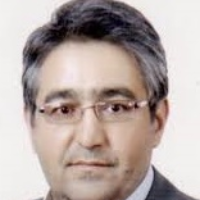Effect of Regulated Deficit and Partial Root Zone Drying Irrigation on Quantitative Traits of Rosmarinus officinalis L.
In arid and semi-arid areas, water can be a limiting factor for plant growth and agricultural yields. Considering limited water resources in arid and semi-arid climate of Iran, deficit irrigation is one of the strategies for efficient use of water and increasing water use efficiency in agricultural lands. Deficit irrigation (DI) is a suitable solution to gain acceptable and economic performance by using minimum amount of water. The Partial Root- zone Drying (PRD) irrigation is a new improvement in deficit irrigation in which the half of the root zone is irrigated alternatively in scheduled irrigation events. The plants with PRD irrigation method can, therefore, have different root system in comparison with other irrigation methods. At this method the plant’s condition would be OK by withdrawing water from wet side, and the roots at the dry side can release abscisic acid hormone which decrease the stomatal conductance and consequently the water use efficiency would increase. Also, by using proper irrigation management in farm, we are able to utilize water, soil and fertilizer to produce high yield and quality products. Drip irrigation is considered one of the most efficient irrigation methods. One of the major advantages is its ability to apply water to the soil as often as desired and in smaller quantity than the other irrigation methods. Drip irrigation has been practiced for many years for its effectiveness in reducing soil surface evaporation and it has been widely used in horticultural crops in both greenhouse and open field.
In order to compare two deficit irrigation methods on plant growth characteristics of Rosmarinus officinalis L., a field experiment was carried out during 2016 growing season at an experimental farm in Kerman Municipality seedling production station. The experimental treatments were arranged as randomized complete block design with three replications. The irrigation regimes consisted of full irrigation (FI-100), regulated deficit (RDI75 and RDI55) and partial root zone drying irrigation (PRD75 and PRD55). In this study, drip lines were placed on the soil surface at a distance of 15 cm from the plant and plant rows were placed between drip lines. The irrigation interval was 4 days for all treatments. In the full irrigation and regulated deficit irrigation treatments, the plants were irrigated from two sides for every irrigation. In the PRD, one of two neighboring drip line was alternatively used for irrigation. The irrigation interval was 4 days for all treatments. Dry weight, leaf area index (LAI), number of shoots, plant height, water productivity, root fresh weight, root depth and root volume were measured. Since the highest essential oil of rosemary is at 50 percent of flowering time, the above-mentioned indices were measured at the middle of flowering (190 days after planting) by removing the side rows in each replicate and half a meter from the beginning and end of each row. As a marginal effect, 10 plants were randomly selected and sampled from two middle rows, each replicate of each treatment. The harvested bushes were dried at 25 °C for three weeks and then the dried weight of the vegetative organs was measured. Moreover, the number of 10 plants selected from each treatment was accurately counted to determine the number of shoots. Data were analyzed statistically using SAS Statistical software. Treatment means were compared using LSD test.
The results showed that highest herbage dry weight (145.3 g) and leaf area index in different stages of growth were under full irrigation treatment in which no significant difference between this treatment and 75 percent water replacement in partial root zone drying was observed. The highest number of shoots (128.7) and plant height (68.4 cm) were also obtained by full irrigation treatment and there was significant difference between this treatment and other treatments. However, the highest water productivity (2.06 kg/m3), root fresh weight (3.8 g), root depth (16.4 cm) and root volume (2.4 cm3) were found in 75 percent water replacement in partial root zone drying.
According to the results, 75 percent water replacement in partial root zone drying irrigation treatments, in addition to saving water consumption, provides better use of soil moisture and sunlight. Thus, this treatment can be considered as a suitable approach to cope with the water crisis and achieve a sustainable agriculture.
Keywords: Drip irrigation, Drought stress, Leaf area index, Medicinal plant, Rosmarinus officinalis, Water productivity
- حق عضویت دریافتی صرف حمایت از نشریات عضو و نگهداری، تکمیل و توسعه مگیران میشود.
- پرداخت حق اشتراک و دانلود مقالات اجازه بازنشر آن در سایر رسانههای چاپی و دیجیتال را به کاربر نمیدهد.



